Figure Composition in Watercolor
This is a figure study for a watercolor of my friend Aimee. I loved the composition the moment I saw it. She’s reading in the sun, against the backdrop of an incredible vista in Provence, France.
I’m not sure I’ll go ahead with the larger painting of this scene right away. For now, it’ll live safe and dark in the pages of my watercolor sketchbook. I’ll check in with it later.
Figure composition in watercolor can be a little tricky if you’re new to either figurative art, or watercolor painting, so I’ve added links to helpful practice and resource sites below.
Do you insert pauses in your figurative watercolor studies? Test the compositions in a sketchpad, and then come back to them later to see how your eyes respond to the sketch? After looking at a composition for a long time, it’s good to look away, and return later – with fresh eyes, I think.

Resources for Figure Composition
- If you’re interested in free video lessons that guide you through life drawing exercises, have a look at Life Drawing Academy offerings here. The courses cover fundamental exercises in drawing the head and face, and how to draw hands. (<– and that one is always a toughie, eh?)
- Michael Holter offers a free seven-steps to watercolor portraits lesson in this post, with the remaining demo video in full length posted on Facebook.
- Composition in art can be a tough subject to get your head around when you begin painting watercolors. The unforgiving nature of watercolor pigment’s stain on paper can lead to a tight, nervous grip on your tools. Following a habitual sequence of light-to-dark color application helps, and working on skill building for a solid drawing under the pigments gives your brushes a framework to follow too. This post on The Virtual Instructor has great tips, and applicable examples to help you understand composition in art.


Assorted Figurative Watercolor Compositions
School Girl Artist Fantasies
I’ve been sketching and doodling people since at least the 6th grade. The margins of my spiral lined notebooks always had faces, eyes and figures loitering on the edges of my homework and class notes. I used to wish, with all my heart, that I could draw better. (Have you seen this anatomy for artist’s book?)
Over the years, I realized that we can never be “good enough’ with rendering the human face and figure, so it’s a drawing subject perfectly suited towards a perpetual attitude of learning. The more we practice, the closer we get to better than we were last week.
And every element of our furtive figure sketches that are even slightly “off” will be noticed, because as people, we’re hard-wired to zoom in on something not-quite-right in our fellow humans. Sigh.

The Figure in Watercolor
Since I consider the face and figure one of the hardest subjects to paint in watercolor, I’ve tried to convince myself to throw in the towel many times. But I won’t do it.
Figurative work was one of my first loves in the art world, so I’ll keep climbing that hill, and reassuring myself that brush-miles add up, and the rewards aren’t visible till you climb to the top of the next hill for the view.
I hope you’re taking stock of the subjects you’re pulled towards, despite their challenges. It’s a good way to stay true to ourselves, no matter what level we’re standing on at the podium of the Pursuit of Art.
Thanks for stopping by today, and I’ll see you in the next post –
Give it your best effort,
Belinda
P.S. Seth Godin wrote a thought provoking essay here on our human trait of being hooked on status while simultaneously seeking beauty, and how that affects the way we support the arts, and how we categorize the arts as a market. Great dinner table discussion.

Art Quote
I was made for the library, not the classroom.The classroom was a jail of other people’s interests. The library was open, unending, free.
Ta-Nehisi Coates


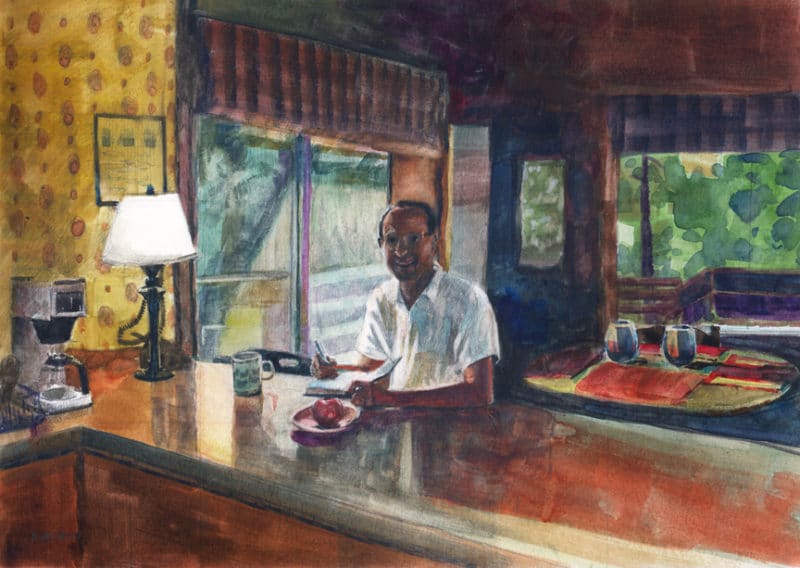




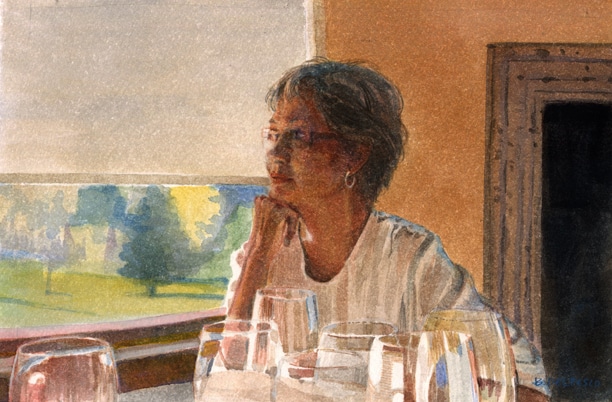

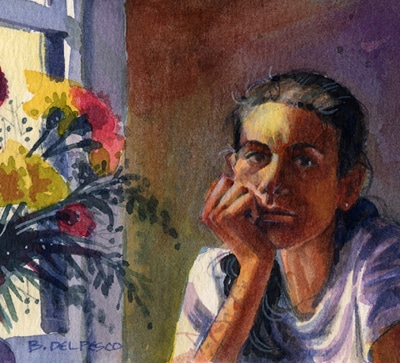
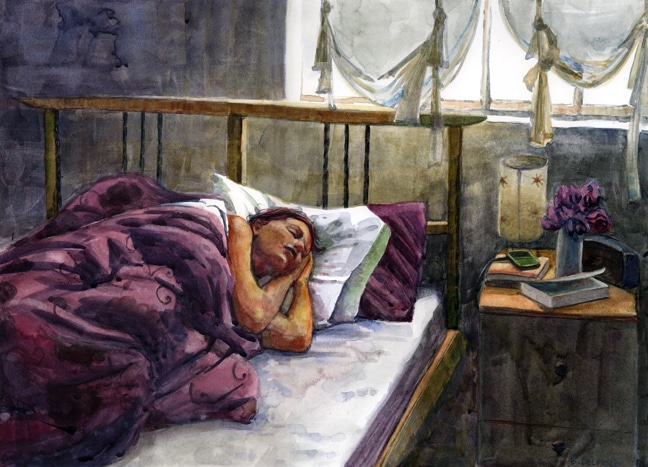

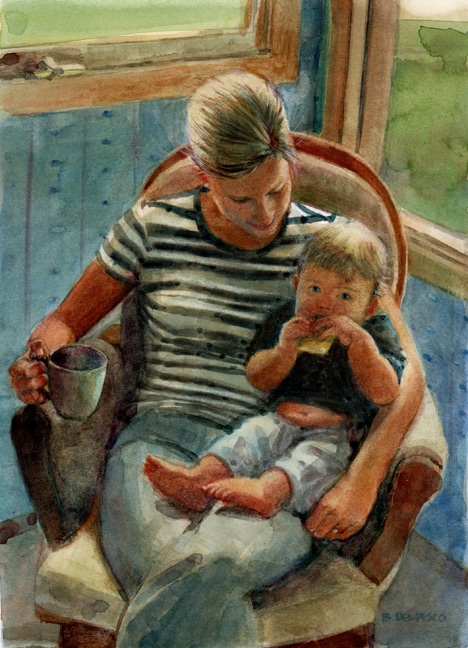

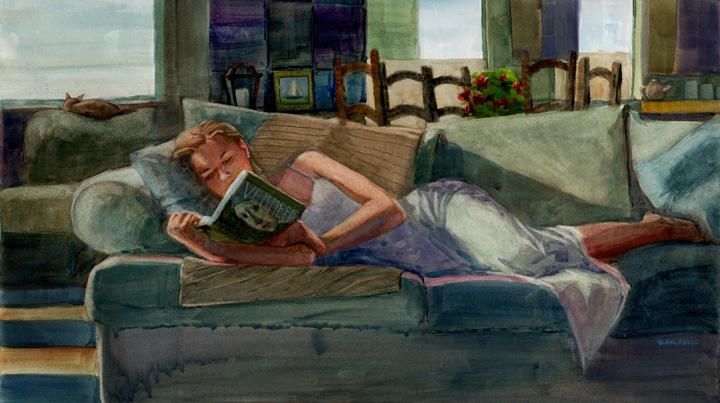


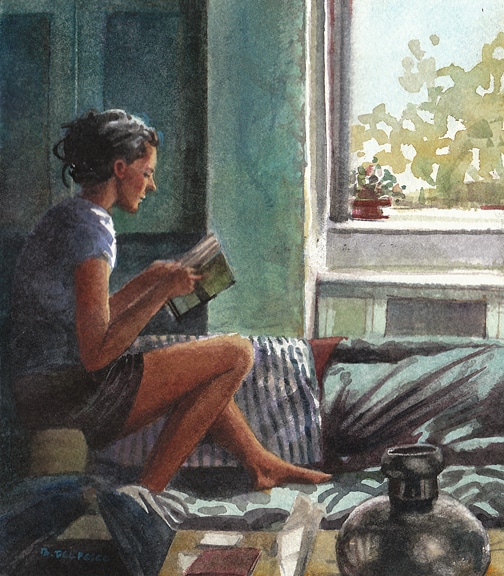
Hello,
I just found your website. Thank you for sharing all your knowledge. I have been watercolor painting for many years but still get frustrated with certain things. And YES, painting the human figure is very challenging. I encounter difficulty with painting figures especially when painting small figures in my landscapes: they don’t show up against the scenery, because flesh color does not pop against grass, or a brick road, etc. I don’t have trouble drawing the little figures but then he or she can’t be seen against the background. OF COURSE, I try to leave too much detail in those figures!!! Do other artists tend to remember to leave a white edge where the arm lies against a red shirt? Or is it better to bring in a crisp outline with a dark color or a sharp black pen? I think my style is a little closer to yours than some other artists because some artists only suggest their figures. (I am not saying I am as talented as you!)
God Bless and may you be as successful as you ever dreamed,
Joyce Kopac
jkopac76@gmail.com
joycekopacartwork.com
Hi Joyce, Thank you for your very kind note. I’m grateful for your compliments, and I appreciate your good wishes. I don’t usually paint figures in landscapes, and especially not receding figures that are small in scale compared to the surrounding environments. Despite that, I love to study the creative mock ups by very talented concept artists who design theme parks (part of my old career). They have always had the ultimate challenge of making crowds of people stand out in front of very complex backgrounds. (search for “watercolor concept art for theme park design”) And they do it – as you’ve guessed – by simplifying form, and using values rather than details or edge lights. If the figure is light, it’s always against a dark background or foil. If the figure is dark, it’s against a light background, or it’s in cool colors against a warm background, etc. The most important element is probably about focal point. If your landscape is the star, and the figure is a supporting character, trust that a “suggestion” of a figure is enough, and your viewers will fill in the details. 🙂
wow wow that is beautiful.
I am just starting……..
Thank you for your testing and will buy this paper…
Hi Wil, Thanks for the compliment, and welcome to printmaking!
Hi Belinda,
I am always mesmerised watching all your beautiful work, I wished I knew how to safe your posts in one spot just so I could enjoy it at my relaxing time.
Best regards and take care.
Steinunn
Hello Steinunn! Thanks for your kind compliment, and I hope you know that all the posts will remain here, safe and sound, so you can reference them any time you want. I hope your painting and art-making adventures are going well. XOXO